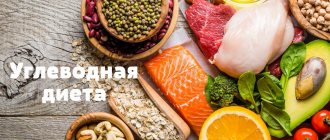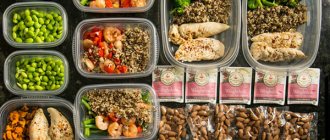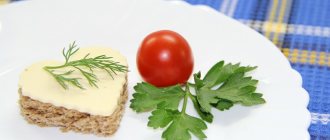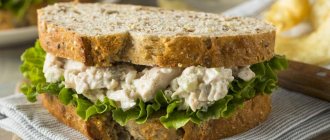Many athletes in gyms and sports sections have heard from their colleagues and trainers about the existence of an anabolic or protein-carbohydrate window. It's time to figure out what it is, how to close this carbohydrate window, and whether it even exists in reality or is it myth among athletes.
The carbohydrate (anabolic) window, or as it is often called the protein-carbohydrate window, is a period of time (usually 30-40 minutes ) during which the human body experiences a maximum need for carbohydrates and proteins in order to achieve a pronounced anabolic response and muscle growth.
The nutrients consumed during the carbohydrate window go directly to restore the body after training, to stimulate the growth of muscle mass, strength, endurance, without being stored in fat.
Where does the carbohydrate window in the body come from?
In order to have energy to train, it must be taken from somewhere. The body primarily takes this energy from glycogen , that is, stored carbohydrates in the muscles and liver, which are some kind of energy “tanks” for athletes, from which carbohydrates are gradually consumed for energy .
excess carbohydrates (sugars) as glycogen. And as you probably already guessed, the more muscles an athlete has, the more energy “tanks,” which means you can eat more carbohydrates without fear of obesity. That is why many bodybuilders can afford a high daily caloric intake, but other athletes with small “tanks” cannot afford muscles, as they will become covered in fat very quickly.
When glucose in the bloodstream during exercise, the body begins to actively consume glycogen in an oxygen-deficient (by the reaction of anaerobic glycolysis) from the glycogen depot, for example, during strength training approaches to the “pump” or sprinting or by the reaction of aerobic glycolysis in an environment of excess oxygen , such as long-distance running or swimming, cycling or jumping rope at a moderate pace. Thus, the breakdown of glycogen from the glycogen depot contributes to a sharp increase in blood sugar levels, the athlete feels a surge of strength - a “second wind” .
As you probably already know from our other articles, first, when performing aerobic , glycogen is consumed, and only then fats , and the less oxygen is consumed, the greater the contribution carbohydrates , since all other things being equal, energy consumption by carbohydrates require 12% less oxygen for oxidation . Accordingly, fats begin to oxidize (burn) only with moderate cardio load , with an intensity of 50-60% of the maximum , and then after 20-30 minutes of doing the exercise.
The more intense the load, the more carbohydrates contribute to energy supply. That is why, for all people who want to lose weight, it is very important to perform aerobic exercises at a pulse rate no higher than 120-125 beats per minute fat burning are actively launched in the body .
Ultimately, glycogen reserves are wasted, and the body begins to actively break down triglycerides (fats). After all easily accessible energy reserves are exhausted, the muscles cease to resist the external load, failure , and then cramps occur . That is why we often see at marathon races how athletes without fail take so-called pit stops to close the carbohydrate window, that is, to supply fast carbohydrates to restore blood sugar levels.
Fueling with fast carbohydrates during marathon races
Also keep in mind that for trained athletes, with the same aerobic load, energy consumption is mainly due to the oxidation of fats, and only then carbohydrates, and for beginners , on the contrary, carbohydrates, and then fats, make a greater contribution to energy supply.
Fats are found in the body in almost unlimited quantities, but the supply of carbohydrates is quite limited , which is why experienced athletes burn fat faster and more efficiently than beginners. After all, the more oxygen the body can absorb, the higher its aerobic ability to train.
How to close the carbohydrate window?
When gaining muscle mass, the choice of most athletes falls on simple carbohydrates and a protein shake or a serving of gainer. This scheme is quite appropriate if you need a high total caloric intake in your diet. 40-60 minutes after this, a full meal should follow, rich in animal proteins and complex carbohydrates. This way you will provide your body with all the nutrients it needs to recover.
During the period of losing weight, everything is much simpler. If you are a girl, and your goal is simply to lose weight, and muscle mass does not interest you, then you don’t have to worry too much about the carbohydrate window. Of course, if you do strength training in the gym, then some complex carbohydrates will improve your well-being and help you recover faster, but there is little point in closing the carbohydrate window after running or other cardio activity, since you were doing aerobic, not anaerobic, exercise.
Everything is much more difficult during the cutting period, when your goal is to burn as much fat as possible and preserve as much muscle tissue as possible. It is necessary to close the carbohydrate window in order to remove the body from a catabolic state, but this must be done correctly so as not to create a calorie surplus. However, before taking carbohydrates, it is advisable to take a fast-absorbing protein, for example, BCAA, complex amino acids, whey protein isolate or hydrolyzate. If you are not using sports nutrition, then regular boiled egg whites are best. This will reduce cortisol production to zero, but will not raise blood glucose levels. Wait 40-60 minutes before your next meal. This way you will increase the duration of production of your own growth hormone. It turns out that muscle tissue will be in a state of anabolism, and fat tissue will be in a state of catabolism. This is exactly what you need for high-quality fat burning. After this, you can slowly go home, where your next meal should be waiting for you. It should contain complex carbohydrates, quality protein and fiber, but not be high in calories.
So, we figured out what there is to close the carbohydrate window at certain stages of training. Now let's list the products that are best suited for this.
| Stage of the training process | Immediately after training | 40-60 minutes after training |
| During weight gain | 1. Serving of whey protein + 2 medium bananas or 100 grams of dried fruit2. High carbohydrate gainer serving | 150 grams of cereal, potatoes or pasta (dry), 200 grams of chicken fillet, turkey, fish or lean beef |
| When losing weight | 1. After cardio training – optional2. After strength training - whey protein isolate or hydrolyzate + 80 grams of oatmeal, buckwheat or rice | 80 grams of cereal or pasta (dry), 200 grams of fresh vegetable salad, 200 grams of chicken fillet or scrambled eggs from two whole eggs and ten whites |
| Drying | 1. Several servings of BCAA or complex amino acids2. Serving of whey protein isolate or hydrolyzate | 50 grams of cereal or pasta (dry), 150 grams of fresh vegetable salad, 200 grams of chicken fillet or scrambled eggs from two whole eggs and ten whites |
How long does the carbohydrate window last?
still unknown ; scientists are still arguing among themselves. However, in the traditional sense 30-40 minutes after training , but at the same time, studies have been conducted that say that it can reach up to 2-4 hours and even a whole day . That is, the body can actively absorb proteins and carbohydrates the whole day after training and actively direct them to the synthesis of new muscle structures.
How long does the carbohydrate window last?
Determining the amount of carbohydrates to close the carbohydrate window
Knowing how to close the carbohydrate window after a workout, it is necessary to solve another issue. How much carbohydrates does a tired, hungry body need? Disputes between bodybuilders and scientists on this topic have been going on for many years. The first ones talk about 200 grams, the second ones about 50 grams. If you are experiencing moderate loads, then 80 grams will be enough for you, since an excess of carbohydrates can cause excessive insulin secretion, which interferes with the “conversion” of carbon into glycogen.
When determining the quantity, the weight of the athlete should also be taken into account. There are many novice athletes who have made it a rule to “load up” with carbohydrates and proteins after training. And fast for the remaining time. However, this is precisely what can be called the most serious mistake. You should eat in small portions, as before - 5-6 times a day. The first few hours after classes are exclusively carbohydrates.
IMPORTANT! There are a number of studies that have proven that for every kilogram of body weight you need to take 0.5 grams of beef, egg, whey or other high-quality protein. Moreover, this is necessary both after and before training.
The connection between hormones and the anabolic window
During training, the stress hormones cortisol and adrenaline , which also help to train, the first of which is responsible for the blood sugar level so that it is not extremely low, and the second, in conditions of stress, stimulates the functioning of the central nervous system and cardiovascular system. vascular system, enhances glucose synthesis, fat breakdown, increases tone and blood supply to muscles.
However, even after the training process, the influence of stress hormones on the body does not stop, they actively continue to have a negative impact on energy processes, destroying muscle mass, using proteins as an energy source, and fats, if you do not take nutrients for a long time, actively begin to be deposited. And our task, as athletes who want to maintain maximum muscle mass , or even increase muscle mass, is to neutralize the effect of adrenaline and cortisol on the body as quickly as possible.
insulin , which is actively produced by the pancreas in response to increased blood sugar levels, successfully deactivates the action of adrenaline and cortisol
However, insulin has one significant drawback : along with neutralizing stress hormones, it blocks the action of somatotropin , which by its nature has both a catabolic effect on the fat layer and an anabolic effect on muscles. In other words, growth hormone helps you lose weight and build muscle, but insulin prevents it from doing this. Therefore, we need to look for some kind of golden mean .
The connection between hormones and the anabolic window
Many practicing athletes , coaches and simply scientists recommend closing the anabolic window, depending on your body type and the pursued sports goal.
For example:
Endomorphs and mesomorphs , as well as all athletes whose goal is to lose weight (dry muscles), are recommended to consume proteins in the form of ready-made amino acids (an expensive option), or in the form of whey or egg protein . This approach to post-workout nutrition will protect muscles to the maximum from catabolism , quickly launch the processes of muscle fiber restoration and at the same time slightly increase insulin production.
For ectomorphs or “hard gainers” - people who find it very difficult to gain weight, it is recommended to close not only the protein window, but also the carbohydrate window, that is, after a workout, consume a high-calorie, protein-carbohydrate cocktail , for example, a gainer, or prepare it yourself at home.
Closing correctly
Gaining mass involves training hard with heavy weights at the limit of your capabilities. After all, it is necessary to achieve microtraumas of muscle fibers for subsequent supercompensation. Losing weight aims to spend as much energy as possible, in fact - in any way. Let's figure out how to close the protein-carbohydrate window in both cases.
When gaining weight
It is known that muscle growth occurs not during training, but after its completion. During exercise, you injure muscle fibers, and the body tries to restore them with a reserve in order to withstand the load next time. For this reason, the process of replenishing resources at this stage is very important.
After a hard workout, the level of adrenaline and cortisol in the body increases sharply. You are putting real stress on your body. These hormones destroy the muscles you work so hard to build.
To block their effects you need fast carbohydrates. They cause the production of insulin, which is their antagonist. The carbohydrate window allows you not to worry that what you eat will be stored as fat, because the metabolic rate increases.
Protein is needed for the restoration and growth of muscle fibers. This is the main building material of our body.
Athletes' need for protein is very high, but, unfortunately, this element is not always well absorbed. A low amount of digested protein slows down the process of weight gain. This is another reason to take advantage of the protein-carbohydrate window and absorb all the necessary elements.
Considering that the notorious window is very short, every minute plays a big role. You won’t be able to take advantage of its benefits if you’re used to having a snack only after you get home from the gym, stopping at the store on the way.
By the way, there is another purely protein window, which opens at 11-12 pm. Late intake of protein is necessary for athletes to support the production of growth hormone and maximize tissue restoration.
When losing weight
If your goal is to lose weight and you've just completed a cardio workout or an intense gym session with light weights and high reps, the recommendations will be slightly different.
After cardio, in principle, you can just drink mineral water. However, the muscles also worked and even if you are not interested in their growth, it would be wrong to lose what you have. Therefore, it is advisable to support them and additionally consume some protein product. This could be a protein shake, low-fat cottage cheese or kefir.
After a strength-fat-burning workout in the gym, in addition to protein, you can eat a sweet fruit, a slice of chocolate, or add a spoonful of jam or honey to your cocktail. A small amount of carbohydrates when losing weight is allowed, especially since the carbohydrate window is in effect, so don’t worry.
Effect of protein and carbohydrate intake on catabolism and muscle synthesis
In order to progress in bodybuilding, it is necessary to fill the amino acid pool (the necessary amount of amino acids to prevent catabolic processes), otherwise, for example, training on an empty stomach will lead to the opposite result due to the development of a negative nitrogen balance in the body, which will destroy muscles , despite the fact that the strength exercises themselves are aimed at their growth.
If you plan to exercise immediately after sleep , then keep in mind that at this time the body will especially need carbohydrates and proteins, which will subsequently have an anabolic and anti-catabolic effect on muscle tissue.
Another question arises at what time of intake to consume nutrients, and in general how important it is for the athlete.
Conduct scientific research ( Tipton KD, Rasmussen BB, Miller SL, Wolf SE, Owens-Stovall SK, Petrini BE, Wolfe RR: Timing of amino acid-carbohydrate ingestion alters anabolic response of muscle to resistance exercise. Am J Physiol Endocrinol Metab 2001, 281(2):E197-206. ), which indicate that taking even 6 grams of amino acids increases their concentration in the blood by 130% , which lasts for about two hours, and taking whey protein (study by Fujita S, Dreyer HC, Drummond MJ, Glynn EL, Volpi E, Rasmussen BB: Essential amino acid and carbohydrate ingestion before resistance exercise does not enhance postexercise muscle protein synthesis. J Appl Physiol 2009, 106(5):1730-9. ) at a dose of 20 grams generally increases the concentration amino acids by 440% within 3 hours after training. This is why the urgency of filling the post-workout protein window, which everyone writes about, is called into question, since taking 20 grams of protein , as we see from the study, maintains a significant spike in amino acids at a high level without the threat of muscle protein loss and poor recovery (this approach to post-workout nutrition is acceptable if you drink protein before training).
Athletes who go to training after work without consuming nutrients or before lunch necessarily a protein shake after training to suppress catabolism and start recovery processes.
According to the study by Bohe J, Low JF, Wolfe RR, Rennie MJ: Latency and duration of stimulation of human muscle protein synthesis during continuous infusion of amino acids. J Physiol 2001, 532(Pt 2):575-9 ., the anabolic effect of food (protein synthesis) after its consumption lasts about 3 hours , despite the fact that the level of amino acids still remains high in the blood.
The effect of protein and carbohydrate intake on muscles
As a conclusion, we can conclude the following: if you do not have the opportunity to consume nutrients at least 3-4 hours before training, then it is highly advisable for you to consume a protein-carbohydrate cocktail in an amount of at least 25 grams to suppress catabolic processes, and if you plan Immediately after training, eat a large protein-carbohydrate meal, then the importance of consuming protein before training is reduced .
Carbohydrates
As for carbohydrates, there is no scientifically valid data on how much and when they should be taken. Therefore, all the information that you have read anywhere and know was most likely collected empirically (experienced).
For example, carbohydrates, being an integral part of glycogen , are most important in sports where endurance , for example, running, skiing, swimming, which is why it is extremely important after aerobic training to fully supply the body with fast carbohydrates for a speedy recovery. usually recommended to take the same amount of carbohydrates as protein, or a little more, at one time.
As already written above, carbohydrate intake is most important for aerobic sports, and according to recent research ( Koopman R, Beelen M, Stellingwerff T, Pennings B, Saris WH, Kies AK, Kuipers H, van Loon LJ: Coingestion of carbohydrate with protein does not further augment postexercise muscle protein synthesis. Am J Physiol Endocrinol Metab 2007, 293(3):E833-42. ) showed that taking them together with proteins does not bring any advantage over the synthesis of new muscle structures , taking them after training even 0, 6 grams of carbohydrates per kg of body weight had no effect on the amino acid balance in the body for six hours compared to protein intake.
How does carbohydrate consumption affect muscles?
In addition, additional studies were conducted ( Staples AW, Burd NA, West DW, Currie KD, Atherton PJ, Moore DR, Rennie MJ, Macdonald MJ, Baker SK, Phillips SM: Carbohydrate does not augment exercise-induced protein accretion versus protein alone. Med Sci Sports Exerc. 2011, 43(7):1154-61. ) on the effect of carbohydrates on muscle growth, the essence of which was to measure the protein concentration in muscles after taking of whey isolate and combining it with 50 grams of maltodextrin ( fast carbohydrate). As a result, scientists found that leg strength training increased muscle protein synthesis in the same amounts, regardless of taking protein with carbohydrates or protein alone.
In other words, scientists have once again proven that protein synthesis is not affected by carbohydrate intake.
Therefore, in bodybuilding, the primary role will be played not by the time of carbohydrate intake, but by their quality and the total amount consumed per day.
How carbohydrates affect muscle growth
During training, microtraumas appear in the muscles.
And after exercise, the body uses protein to “repair” them, and builds muscle along the way. The Lifehacker Telegram channel contains only the best texts about technology, relationships, sports, cinema and much more. Subscribe!
Our Pinterest contains only the best texts about relationships, sports, cinema, health and much more. Subscribe!
Thus, after heavy exercise, the body begins to rapidly synthesize protein from amino acids - this is anabolism or muscle building. In parallel, protein breakdown or catabolism occurs. The faster the synthesis and slower the breakdown, the more muscle you will be able to build.
Carbohydrates and protein synthesis
Carbohydrates do not directly increase protein synthesis. It doesn’t matter whether you drink a pure protein shake or add, for example, maltodextrin, a super-fast carbohydrate. This does not change Coingestion of carbohydrates with protein does not further augment postexercise muscle protein synthesis. protein balance - protein synthesis and breakdown remains the same.
If you simply consume carbohydrates, protein synthesis will be less and breakdown will be greater. Combined ingestion of protein and free leucine with carbohydrate increases postexercise muscle protein synthesis in vivo in male subjects. than in the case of protein or protein-carbohydrate supplements.
It turns out that the main thing is to eat protein, but you can completely forget about carbohydrates? Not really. Because carbohydrates still affect protein synthesis, but not directly, but through glycogen and hormones.
Carbohydrates and glycogen
Once in the body, carbohydrates are converted into glucose and used to produce energy. If there are more of them than needed for immediate energy consumption, they are stored in reserve in the muscles and liver in the form of glycogen and in fat cells in the form of fat.
Glycogen is used by muscles during physical activity, but its reserves are very small Post-Exercise Muscle Glycogen Repletion in the Extreme: Effect of Food Absence and Active Recovery - one intense workout is enough to completely deplete them.
The body needs to replenish glycogen stores in the muscles, and if you do not give it glucose, glucogenesis begins: under the influence of the hormone cortisol, the body begins to produce glucose from lactate (part of lactic acid) and amino acids of muscle tissue.
It turns out that if you don't replenish your glycogen stores, the body will do it on its own, but at the same time catabolism All About Post-Workout Nutrition - the breakdown of muscle tissue protein into amino acids - will accelerate.
You can eat immediately after training or after some time if you don’t have an appetite yet. The main thing is to do it within an hour. If you are late, glycogen will be synthesized much more slowly. Determinants of post-exercise glycogen synthesis during short-term recovery.
Carbohydrates and hormones
Carbohydrates increase the production of anabolic hormones and reduce the amount of catabolic ones. If you replenish carbohydrate reserves in time, this is what will happen:
- The production of insulin will increase, which helps amino acids penetrate muscle cells to repair muscle tissue. This hormone is produced in response to increased blood sugar, and to increase its amount, you need Dietary supplements to affect the anabolic hormones after weight-training exercise carbohydrates or their combination with protein.
- The amount of growth hormone will increase, which increases muscle growth and slows down muscle breakdown. Consuming protein and carbohydrates immediately after exercise increases Dietary supplements affect the anabolic hormones after weight-training exercise production of this hormone in the next six hours. Protein without carbohydrates does not have this effect.
- The effect of a carbohydrate and protein supplement on resistance exercise performance, hormonal response, and muscle damage will decrease the amount of cortisol. This hormone is a muscle destroyer. It triggers the release of amino acids from your muscles to be converted into glucose so that in an emergency you have enough fuel to fight or escape. Therefore, the less cortisol after training, the better.
As you can see, carbohydrates are still needed to build muscle mass.
How do the age and training of athletes affect the level of protein absorption?
According to a study ( Burd NA, Tang JE, Moore DR, Phillips SM: Exercise training and protein metabolism: influences of contraction, protein intake, and sex-based differences. J Appl Physiol 2009, 106(5):1692-701 ) conducted in 2009 the mitochondria and myofibrils in beginner athletes , while in advanced athletes only the synthesis of the latter, that is, myofibrillar proteins (myosin, actin, actomyosin, tropomyosin). This study clearly showed the importance of additional intake of BCAA amino acids before and after training by experienced and professional athletes.
Another equally interesting study ( Breen L, Phillips SM: Interactions between exercise and nutrition to prevent muscle waste during aging. Br J Clin Pharmacol 2012. ) in 2012 showed that the body of older athletes, due to metabolism, responds much worse to the drug. proteins and, in general, in principle, to power loads , the so-called “ anabolic resistance ” is observed.
Athlete's age and protein absorption level
Young athletes taking egg white at a dose of 20 grams showed a maximum increase in protein synthesis in muscle fibers, while increasing the dose of protein even by 2 times (40 grams) did not lead to more protein synthesis in muscles, excess protein was simply spent on the body’s energy needs (study Moore DR, Robinson MJ, Fry JL, Tang JE, Glover EI, Wilkinson SB, Prior T, Tarnopolsky MA, Phillips SM: Ingested protein dose response of muscle and albumin protein synthesis after resistance exercise in young men. Am J Clin Nutr 2009, 89(1):161-8. ). Despite this, in older athletes , under the same equal conditions, the exact opposite picture was observed - egg protein at a dosage of 40 grams caused the maximum anabolic response in the muscles (study by Yang Y, Breen L, Burd NA, Hector AJ, Churchward-Venne TA, Josse AR, Tarnopolsky MA, Phillips SM: Resistance exercise enhances myofibrillar protein synthesis with graded intakes of whey protein in older men. Br J Nutr 2012, 108(10):1780-8 . Which directly confirms the fact that older athletes should take more protein than younger ones, all other things being equal.
Biochemical processes in the athlete's body
Our body is a single mechanism. Each physical process (training, recovery) triggers a cascade of reactions in the body. Hormones are released and energy is redistributed. Let's take a look inside these processes to understand where the post-workout carbohydrate window comes from.
What happens during training
Movement requires energy. The body's main source of energy is glucose (carbohydrate). It is actively used by the muscles and brain throughout the entire workout. Blood glucose is quickly consumed. Then its reserves begin to be used - muscle and liver glycogen.
During intense training, glycogen lasts for 30-45 minutes.
Where does the energy come from then?
The process of gluconeogenesis begins when glucose is synthesized from lactic acid, amino acids, and other compounds + fat breakdown occurs.
The process is stimulated by the action of hormones: adrenaline, cortisol. They initiate muscle breakdown to extract protein material.
In addition, during intense exercise, micro-tears of muscle fibers occur. Without this, it is impossible to achieve sports progress.
What happens after training
After training, the body continues to be affected by adrenaline, cortisol, and testosterone. The process of catabolism (destruction) of proteins occurs in order to restore glycogen reserves. That's what the carbohydrate window is!
Here the body needs outside help. It is important for an athlete to saturate the body with glucose and help muscles recover through protein.
Download training plans to prepare for the marathon and half marathon.
Start preparing right now!
How do carbohydrates affect
Carbohydrates change the ratio of hormones to enhance the anabolic process.
Increase insulin
When we consume fast carbohydrates, blood insulin increases. This hormone helps proteins and carbohydrates get into the muscles. This replenishes energy + speeds up recovery.
Reduce cortisol
Cortisol is a stress hormone. It helps the body react quickly in emergency situations: it breaks down muscles, enhances glucose synthesis, and prepares energy.
The same insulin reduces cortisol levels. These are hormone antagonists. As a result, the process of muscle breakdown slows down and recovery speeds up.
Increase somatotropic hormone
If you close the carbohydrate window correctly, the level of somatotropin (growth hormone) increases. It helps muscles grow faster, stimulates protein synthesis, and slows down the catabolism process.
How to close the carbohydrate window (with what products)?
The list of products that need to close the protein-carbohydrate window will differ depending on your goal . Therefore, we can conditionally divide athletes who want to gain weight and muscle mass and people who want to lose weight and dry out their muscles.
On weight: the goal is to gain weight, increase muscle mass
During this period of time, when your goal is to gain muscle mass, we recommend closing the anabolic window with fast carbohydrates and high-quality proteins , that is, with high biological value.
Great for “closing the window” is a gainer or whey protein with creatine; we recommend the following food products:
- Protein bars
- Jam
- Fruits (bananas, oranges, dates, apples)
- Cereals
- Yoghurts
You can also prepare a high-protein cocktail , which must be put in the refrigerator, and after the workout, drink it (usually such drinks include the following ingredients : bananas, yogurt, oatmeal, walnuts, cottage cheese, jam, eggs, milk, honey, kefir).
Closing the anabolic window on mass
After which you should go home and start your usual meal, for example, it could be rice with chicken breast or fish, vitamin salad and juice.
On drying: the goal is to maintain muscle, lose weight
The main goal during this period is maximum muscle mass
After training, you should not immediately start eating; in addition, there are opinions that it is enough to drink a glass of water and go home. We recommend that, depending on how hungry you are, either drink clean water or drink a protein shake , it is important that it does not contain carbohydrates, which we practically do not need during cutting.
After about 2 hours , start your first meal after training; the diet should include high-quality proteins , lean meat, fish, chicken breasts, vegetables, herbs, olive/linseed oil; only complex carbohydrates : legumes, grains, hard pasta varieties.
Here is an approximate list of products that are allowed for drying :
Squirrels
- Whey/casein protein
- Eggs
- Fish (tuna, salmon, mackerel, trout, halibut, cod, haddock)
- Not fatty meat
- Low-fat cottage cheese
- Hard cheese (parmesan, cheddar, gouda, tilsiter)
- Low fat milk
Carbohydrates
- Durum pasta
- Legumes (beans, lentils, peas, chickpeas)
- Cereals (for example, cereals: pearl barley, semolina, oatmeal, buckwheat, wheat)
- Wholemeal bread
Non-starchy vegetables
- Turnip
- Broccoli
- Cabbage and Brussels sprouts
- cucumbers
- Kohlrabi
- Asparagus
- Bell pepper
- Rhubarb
- Pumpkin
- Radish
Non-starchy vegetables
As for athletes of aerobic sports, we recommend that they fill the anabolic window with fast carbohydrates , which will quickly start the process of restoring muscle glycogen.
During the training itself, if finances allow it, we recommend that all athletes drink BCAA amino acids, which will also ensure maximum preservation of muscle mass.
In addition, do not forget about our recommendations above about different body types, which also need to be taken into account when choosing foods to close the anabolic window.
Why close the carbohydrate window after a workout?
One of the key principles of proper nutrition for gaining muscle mass is: you should not feel very hungry. It is unlikely that after a hard workout in the gym at least one person does not experience it. Fasting is inevitably accompanied by the production of the stress hormone cortisol, which promotes muscle breakdown, and this cannot be allowed during the period of weight gain. In addition, it will quickly replenish lost energy and help you recover faster.
Often, to close the window, nutritionists recommend using carbohydrates with a high glycemic index (fast carbohydrates). This includes any fruit, baked goods, confectionery and any foods rich in sugar. Gainers (protein-carbohydrate mixtures) can also be included in this group, since fast carbohydrates (sugar, maltodextrin, dextrose, amylopectin, etc.) make up 60-80% of the product. It is believed that during this period, fast carbohydrates will not affect your weight in any way and will not be stored as fat, since they will immediately be used to replenish glycogen reserves. Of course, this is mostly misleading. To gain or lose weight, it is important to consider the total number of calories you consume per day, rather than being tied to a specific meal. Many athletes use this approach to post-workout nutrition to gain mass, claiming that closing the carbohydrate window actually helps them improve their performance. Yes, during the period of weight gain this will bear fruit, as it will help create an energy surplus.
Let's talk about how long does the carbohydrate window last? It’s difficult to give a specific answer, but according to various sources it can be 45-90 minutes. The famous bodybuilder Ronnie Coleman generally believed that if strength training lasts 1 hour, then the carbohydrate window lasts the remaining 23 hours of the day. Perhaps for genetic uniques and professional athletes who spend thousands of calories in one workout, this is really true: all the food eaten during the day goes to replenish lost energy reserves. However, for most ordinary people, this approach to post-workout nutrition is unacceptable.
After a workout, you don’t always need a large intake of carbohydrates and a strong rise in insulin levels. Sometimes this can only harm your results. During training, the production of growth hormone increases, which, in addition to all its beneficial properties, also has a fat-burning effect, which is especially important during the period of weight loss or cutting. Together with the intake of carbohydrates, you reduce its production to zero and provoke the production of insulin, which actually contributes to the deposition of excess fat tissue. Therefore, if your goal is to burn fat, then it is better to slightly postpone carbohydrate intake in order to prolong the production of growth hormone. To dampen the stress hormone cortisol, take amino acids or eat a fast-absorbing protein source, such as egg whites. This way, the necessary amino acids will enter the blood, the secretion of cortisol will stop, protein synthesis will begin, and the muscles will begin to recover, but after this the insulin level will not jump.
In any case, during the period of fat burning it is better to generally stay away from fast carbohydrates. The surge of energy and feeling of satiety from them is nothing more than a phantom sensation. Half an hour after eating fifty grams of simple carbohydrates, you will feel hungry again, and your energy levels will drop just as sharply as they rose. During the drying period, it is very important to maintain normal metabolism, this will make it easier for the body to get rid of everything unnecessary. A fast metabolism and sweets or baking are incompatible things.
It is much more advisable to take carbohydrates with a low glycemic index on a diet. They really quickly replenish lost energy, stop catabolism, satisfy hunger for several hours, without causing a strong rise in insulin levels. Complex carbohydrates include any cereals (preferably they should be as little processed as possible), durum wheat pasta, vegetables, boiled and baked potatoes.
Closing the evening carbohydrate window
Before going to bed, the athlete’s body will also need a particularly strong supply of protein compounds and amino acids, since they are the ones who synthesize new protein structural units and heal microtraumas in the muscles. And as you probably already guessed, if you don’t provide with high-quality protein before going to bed, then recovery can take much, much longer than usual, not to mention the fact that catabolic processes , which need to be somehow slowed down .
The best option for supplying the body with amino acids before bed is to consume casein protein , for example, 100% Casein Protein from Optimum Nutrition, thanks to which amino acids will be slowly released into the body, that is, it is ideal to take it just before bed, since casein or complex protein is quite takes a long time to digest by the digestive system. As a last resort, if you have a limited budget, you can buy cottage cheese , or curd mass, in the supermarket, for those who are not drying.
Closing the evening anabolic window
What to eat after training?
Bananas are everything to us, 1-2 pieces may be enough. Sports nutrition: carbohydrate bars (from the sports nutrition series), muesli bar, carbohydrate shake. You can drink apple or grape juice or make a banana smoothie. It is useful to drink a high-carbohydrate mixture (gainer).
If you can’t make a cocktail, you can eat an apple or dried fruit, or a slice of whole grain bread. It is better to make juices yourself, rather than buying them in a supermarket in a cardboard box with a huge amount of sugar and chemicals.
Training plans for marathon and half marathon. and start preparing today.
Many people close the carbohydrate window with regular chocolate with nuts. But do not forget that chocolate also contains fats, which slow down the process of absorption of both proteins and carbohydrates. Well, it’s not worth mentioning about the harmful palm oil, which has been added to all chocolates lately.
Important conclusions and recommendations
I would like to immediately note that many experiments were not entirely consistent and talking about the effectiveness and importance of nutrition before and after training is difficult, but possible.
- Until now, scientists cannot answer which nutrition is more important - before or after training, simply due to the fact that such experiments have not been carried out.
- It makes no sense to take more than 20-40 grams of protein (study Moore DR, Robinson MJ, Fry JL, Tang JE, Glover EI, Wilkinson SB, Prior T, Tarnopolsky MA, Phillips SM: Ingested protein dose response of muscle and albumin protein synthesis after resistance exercise in young men. Am J Clin Nutr 2009, 89(1):161-8 ) at a time or 0.4-0.5 grams per kg of weight, and the indicated dosage in protein must be consumed both before and after training process if you are interested in muscle . The recommended high-quality protein is whey , egg or beef protein.
- The interval between meals before and after training should be no more than 3-4 hours , if the source of protein is sports nutrition (due to the short-term anabolic effect on muscles), but if the protein comes from regular , mixed food, then the period of time can be increased to 5-6 hours .
- The anabolic window lasts about 1.5 hours both before and after the start of the training process, provided that your training is at least 45-90 minutes .
- The workout can be shifted to both pre- and post-workout meals; such a flexible system allows you to effectively consume nutrients; the only thing, and the most important thing in this process, is to keep the time interval between them at 3-4 hours . Therefore, athletes can easily adapt it to themselves based on their preferences, intensity and tolerance of the training process.
Conclusions on nutrition: before and after training
In conclusion , I would like to remind you once again that you should not focus too much on the anabolic window; it is much more important to eat right throughout the day, and not just during the period when the body is especially in need of nutrients .
Keep track of what you eat, what quality and quantity you consume. Also, to achieve your sports goals, our other articles about nutrition for cutting muscles and gaining weight can help you.
If you find an error, please select a piece of text and press Ctrl+Enter.
What happens if you fast after a workout?
- Firstly, microdamaged muscles will not be filled with nutrients, which means they will not grow. Therefore, the window is often called anabolic.
- Secondly, stress hormones (cortisol and adrenaline) during fasting after exercise destroy muscles.
- Third, insulin, which is produced by the body when eating carbohydrates, does not increase and does not fight stress hormones.
- Fourthly, with prolonged fasting, metabolism slows down, even for those losing weight who do not gain muscle - this process is destructive. It is known that with a slow metabolism, the body is worse at parting with its own fats.
For muscle relief
If your goal is not just to lose weight and tone your muscles, but to achieve a sculpted body, then the protein-carbohydrate window is relevant for you
Many people consume only protein foods after training, but this is an unjustified and erroneous step. Without carbohydrates, protein foods will not give the desired effect, but will be used to replenish the body’s energy.
Do not overdo it with the amount of protein, as this will lead to metabolic disorders. Many athletes drink special protein shakes after training that contain the right amount of protein. This is the right step, but if you are a supporter of a balanced diet and are against additional additives, then after training, in addition to carbohydrates, eat one of the foods containing protein:
- Lean poultry;
- Egg;
- Milk and dairy products;
- Oats;
- Lentils;
- Fish fillet.
By eating this way after a workout, you can quickly and properly tone your body and maintain the body’s natural balance.











